When it comes to protein bars, the choices are endless, yet finding a nutritious, heart-friendly low sodium protein bar can be a daunting task.
We live in a world where on-the-go snacks, such as protein bars, have become an integral part of our daily routines. In the rush of everyday life, a quick, protein-packed snack bar seems like a perfect solution. However, with the myriad of options available in the market, navigating the snack aisle can often be overwhelming, especially for those mindful of their sodium intake.
In 2024, the market has seen a remarkable evolution of protein bars, with some brands focusing on creating low-sodium options that cater to those looking to manage their heart health better. Conversely, there are still those bars hiding excessive sodium behind their ‘healthy’ branding.
In this blog post, I will take a deep dive into the best and worst low sodium protein bars in 2024. We’ll take a look at their nutritional profiles, taste, and overall value, helping you to make an informed decision the next time you need to grab a quick, protein-filled bite. So, let’s embark on this journey to find not just a convenient snack, but one that takes care of our heart health too!
*Please note that this post contains clearly identified affiliate links. If you click on these links and choose to make a purchase, I may receive a commission (at no cost to you). As an Amazon Associate, I earn from qualifying purchases.
Top Takeaways
- Protein bars offer convenience and are popular due to their high protein content, but choosing the right one requires careful consideration of factors like sodium content, fiber, and protein.
- A low-sodium diet is essential for heart health, so it’s recommended to select protein bars with 150 mg or less of sodium to reduce the risk of high blood pressure and cardiovascular issues.
- When choosing protein bars, it’s crucial to read food labels and ingredient lists to make informed choices. Some brands offer low-sodium options with whole ingredients, while others may contain excessive sodium, added sugars, and processed ingredients.
- Top Takeaways
- Pin It For Later!
- Why Eat Protein Bars?
- Nutrition 101: What To Look For In A Snack Like A Protein Bar
- Why Is It Important To Eat A Low Sodium Diet?
- 5 Best Low Sodium Protein Bars
- 5 Worst Low Sodium Protein Bars
- Summary of Best and Worst Low Sodium Protein Bars
- Key Takeaways When Buying Low Sodium Protein Bars
- Final Thoughts
Pin It For Later!
Why Eat Protein Bars?
Protein bars have become increasingly popular over the past decades alongside the rising demand for convenience and increasing number of health-conscious consumers.
There are numerous reasons why they are popular, and the most obvious one is convenience. They are typically marketed as a snack on-the-go for those with a busy lifestyle.
Their nutritional benefits further amplify their popularity as they are high in protein for building muscles & keeping satiated with additional nutrients, including fiber, vitamins, and minerals essential to your overall health. They also vary in textures and flavors so you are guaranteed to find one that suits your preference.
Nutrition 101: What To Look For In A Snack Like A Protein Bar
To make sure your chosen protein bar is a healthy option, make sure to read food labels and ingredient lists.
Food labels, or nutrition facts panel, provide information about the nutritional content of the protein bar, including serving size, calories, macronutrients (carbohydrates, fibers, added sugars, protein, fats, trans fat, saturated fats), and micronutrients (vitamins and minerals).
The ingredient list of a product can help you identify allergens, artificial additives, preservatives, and filler that you might want to avoid.
All this information is available on the packaging of the product or website of the company to help you make an informed decision that supports your personal needs.
Fiber
Insoluble fibers are nondigestible carbohydrates that are not digested and absorbed by our digestive system. They stay intact throughout the digestive tract which promotes feelings of fullness and reduces appetite.
Soluble fiber on the other hand forms a gel-like substance in our small intestine which can bind and trap “bad” LDL cholesterol, preventing it from entering the bloodstream.
Dietary fibers are also called prebiotics which are foods that support growth of your gut microbiome. These microbes ferment food in the gut and produce short chain fatty acids (SCFAs) in the large intestine. These SCFAs can reduce inflammation which plays a key role in the development of plaques inside your artery that can result in heart attacks and strokes (1).
Additionally, SCFAs also lower the levels of cholesterol and blood pressure which are measures for heart diseases (2).
Both types of fibers play a part in reducing the risk of cardiovascular diseases.
Protein
Strenuous exercises can cause microscopic tears in muscle fibers and consuming good-quality protein immediately to 2 hours after your workout can stimulate muscle repairs and synthesis of new muscle proteins (3).
Similar to fiber, protein can also aid in satiety as it takes longer to be digested than other macronutrients. They decrease our response to hunger hormones while increasing response to satiety hormones (4). A meta-analysis study concludes that a higher protein diet can promote weight loss and changes in body composition (5).
Low Sodium
Even though protein bars are promoted as healthy foods, they are still processed foods.
Processed foods are typically higher in sodium.
When purchasing protein bars, it’s important to avoid the “health halo effect” or the perception that a particular food is good for you even when it might not be, often due to labeling and marketing techniques.
Reading the product labels carefully will be the best way to avoid this.
1) Try to choose options with 150 mg or less of sodium.
2) Look for bars with an ingredient list of whole food ingredients such as nuts, seeds, fruits, and natural flavorings.
Why Is It Important To Eat A Low Sodium Diet?
Consuming salty food can put your heart at risk of heart disease. High intakes of sodium are especially damaging to your heart as it increases blood pressure, even in children and adolescents.
Your body retains more water to balance out the sodium content which raises the blood volume and consequently the blood pressure. An increase in blood pressure stiffens your arteries, putting you at a higher risk of having a heart attack or stroke.
Increased blood pressure also increases the workload of your kidneys, the body’s filtration system.
Your sodium level works in tandem with your calcium level. When sodium is high and calcium is low, your body produces parathyroid hormone that stimulates the breakdown of bones to bring the calcium level back up. Your bones become fragile and brittle, all are symptoms of osteoporosis.
Thus, eating a low sodium diet ensures the normal functioning of multiple systems of your body.

5 Best Low Sodium Protein Bars
The criteria used for choosing the best low sodium protein bars are:
1) the use of whole ingredients
2) natural flavors
3) containing 150 mg or less of sodium
4) 10 g or more of protein
1. Rise Bar
An Almond Honey Bar is made up of only 3 ingredients: almonds, honey, and pea protein isolate, making it a vegan option. These 3 simple, all-natural ingredients provide 4 g of fiber, 20 g of protein, and only contain 20 mg of sodium.
Pea protein isolate is made of yellow split peas, a relatively new protein isolate on the market, and is referenced here in this pea protein article It has one of the highest protein contents and essential amino acids among other plant-based protein isolates (5). This plant-based protein can lower total cholesterol and triglyceride levels which are associated with atherosclerosis (5).
Almonds are a good source of mono- and polyunsaturated fatty acids which can unclog arteries, by decreasing “bad” LDL cholesterol levels, a risk factor for heart diseases, and raise “good” HDL cholesterol levels.
I was impressed to find out that it tastes like real honey and almond. It is a great snack for in between meals or before the gym if you don’t have enough time to cook up a complete meal.
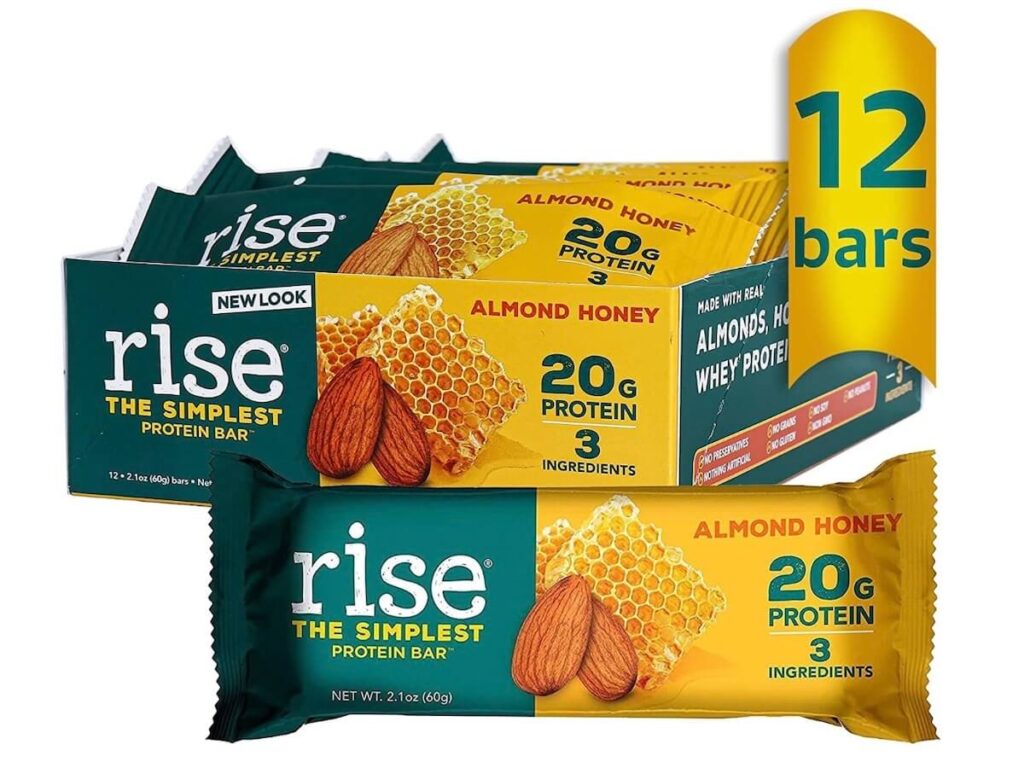
2. NAKED Bar
A NAKED Bar is made with simple ingredients, including natural sweeteners (rice syrup and grape juice concentrate), nut butter, and nut flour, making it a gluten-free option.
The Peanut Butter Bar provides 110 mg of sodium, 6 g of fiber, and 15 g of protein.
As discussed above, nuts contain essential fatty acids that regulate your cholesterol levels and are an important part of the portfolio diet, diet after stent implant, Mediterranean and dash diet and 7 day low cholesterol diet plan. In fact, higher consumption of nuts can lower the risk of cardiovascular disease by 13-19% (6).
Additionally, it contains L-arginine, an essential amino acid that can be found in both plants and animals. However, only plant derived L-arginine can lower blood pressure as it is a precursor for nitric oxide which is involved in the relaxation of muscles.
As a Registered Dietitian, I was impressed by the simplistic packaging and their transparency in regard to the ingredients.
I like this bar because they are what they advertise, a protein bar “with nothing to hide”. This is enjoyable to those who love natural whole foods and like a chewy texture.
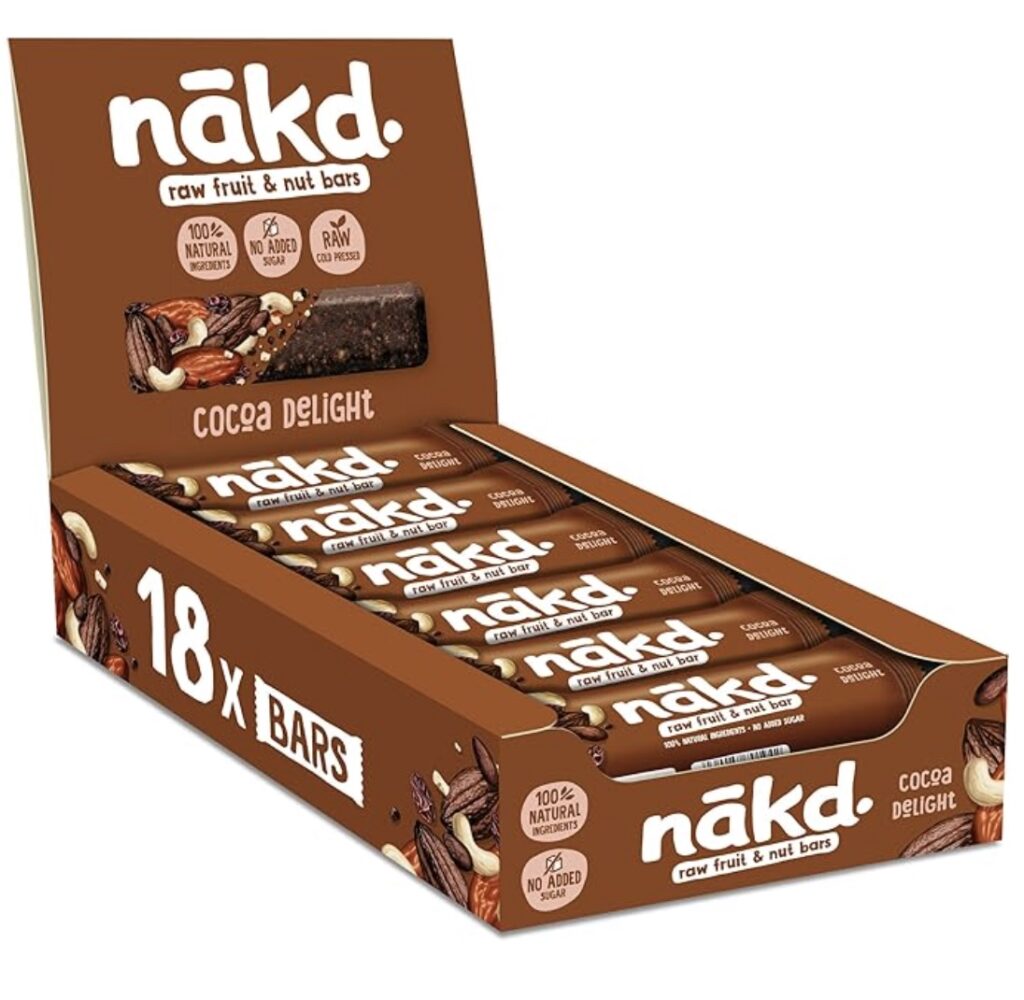
3. RXBar – Blueberry or Mixed Berry
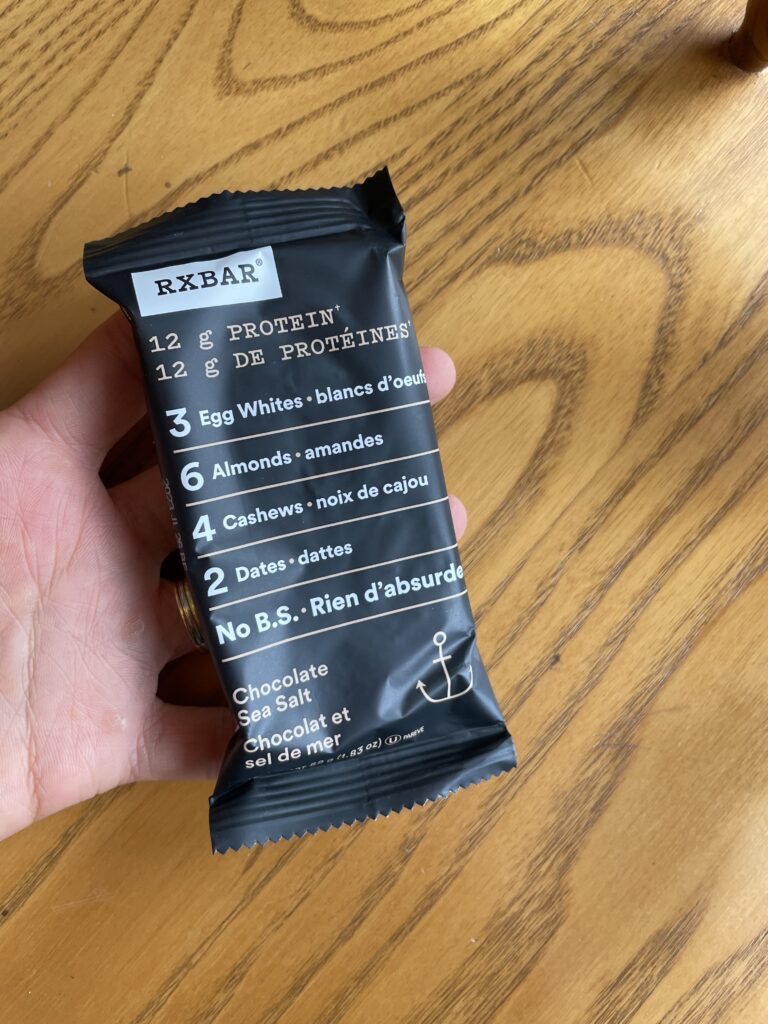
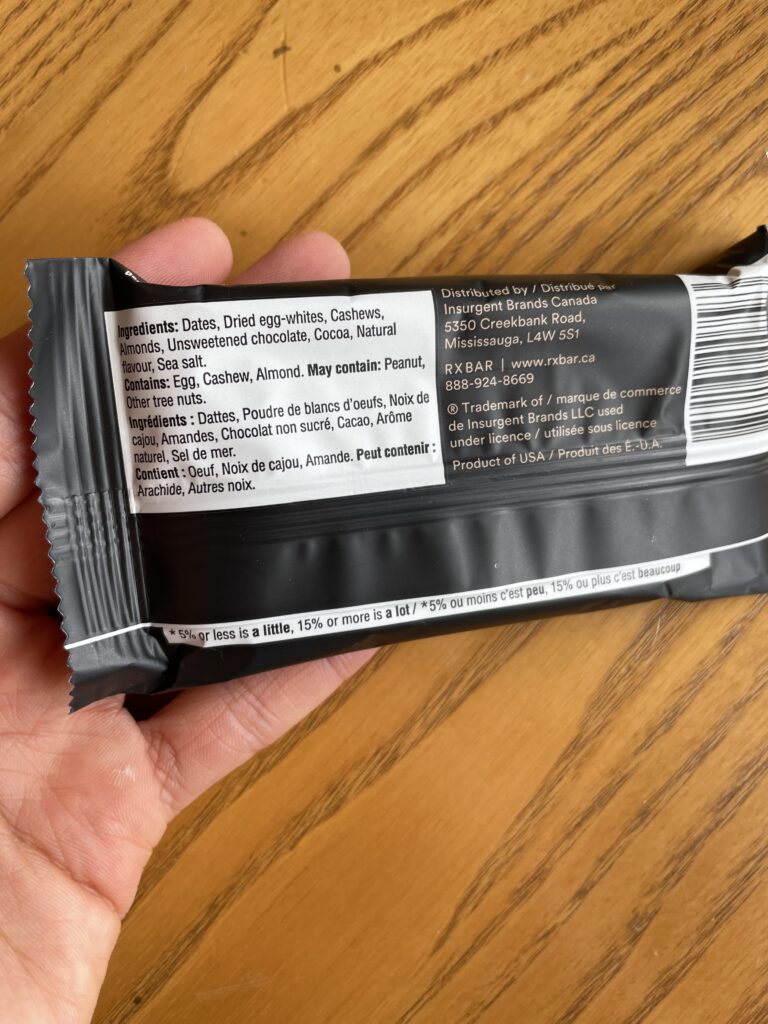

The list of ingredients for these bars are simple and recognizable as advertised clearly on their packaging – no health halo here!
A Blueberry Bar provides 140 mg of sodium, 4 g of fiber, and 12 g of protein. Their key ingredients are cashews and egg whites.
Cashews, like other tree nuts, are high in healthy fats due to their unsaturated fatty acid content. However, we have to mention that they’re also a great source of magnesium, a trace mineral that regulates blood pressure, prevents muscle spasm, and ensures bone health.
You’ll be immediately impressed upon your first bite as you can taste the berries and crunchy cashews.
In my experience, I can compare it to eating a candy fruit roll up that is actually good for you! So, try this out for yourself!
4. Kind Bar


The Kind Bar is kind to your body indeed, as it contains only natural ingredients, with no artificial additives.
A Crunchy Peanut Butter Bar provides 135 mg of sodium, 6 g of fiber, and 12 g of protein.
Peanuts are the first listed ingredients, giving the bar a crunchy and chewy texture. In comparison to animal-based protein, soy protein, another ingredient, has a higher content of healthy fats and soluble fiber to lower LDL and total cholesterol levels.
One of my favorite features of this low protein bar is its flavor as you can never go wrong with some heart-healthy peanuts.
Peanuts are listed as the first ingredient, meaning the manufacturer uses peanuts in the greatest amount, followed by other ingredients. Making this a heart healthy protein bar.
5. GoMacro Macrobar
The GoMacro Macrobar is another vegan option using pea, brown rice protein, and flaxseeds with an array of delicious flavors to choose from.
A Maple Sea Salt provides 100 mg of sodium, 2 g of fiber, and 12 g of protein.
Brown rice protein is a complete source of protein, containing all 9 essential amino acids that you must obtain from your diet. Brown rice protein also contains L-arginine which is important in helping blood vessels dilate and relax, ensuring constant blood flow and blood pressure, like nitric oxide foods.
Flaxseeds are high in alpha-linoleic acid, an essential omega-3 fatty acids, and lignan, a polyphenolic compound. These compounds can regulate your blood pressure. Participants in a study consumed 30 g of flaxseeds daily for 6 months showed a significant decrease in blood pressure (7).
While I don’t have any negative issues to report in regard to its nutritional profile, this is the most expensive option out of 5.
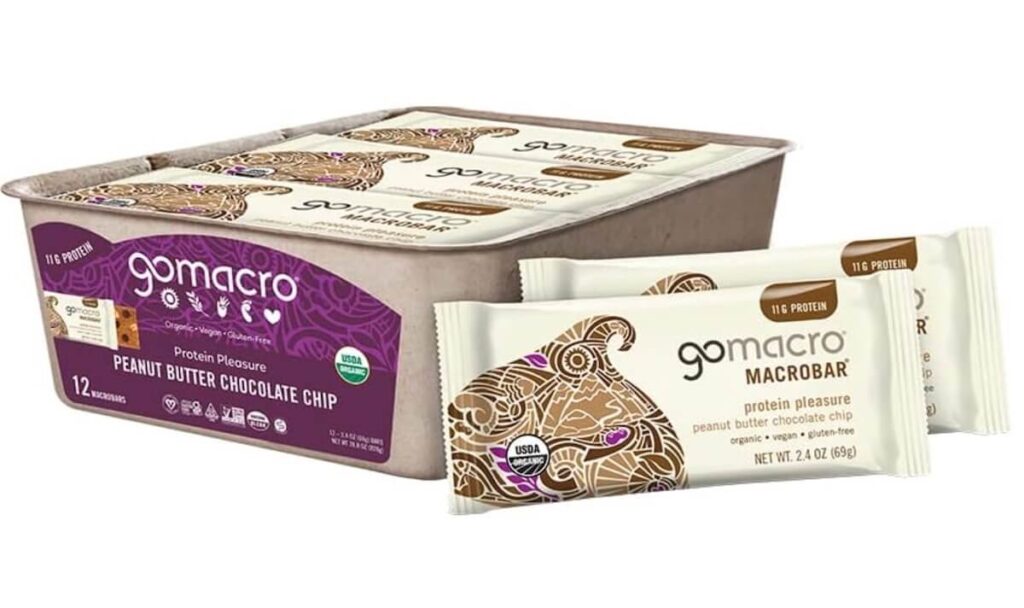
Runner Up Bars/ Honorable Mentions:
Health Warrior Chia Seed Bar
An Acai Berry bar contains 45 mg of sodium, 5 g of fiber, and a modest amount of 3 g of protein, making it an honorable mention. Its star ingredient is chia seeds.
Chia seeds are high in fiber, magnesium, antioxidants, and polyunsaturated fatty acids. Their heart-healthy nutritional composition is a testament for their therapeutic properties. They protect your cardiovascular system, fight inflammation and damage caused by oxidation.

Zing
Zing is another plant-based, gluten-free option.
The Dark Chocolate Mint bar contains 70 mg of sodium, 4 g of fiber, and 10 g of protein.
Zing specifically contains prebiotic tapioca syrup. Tapioca contains resistant starch which is indigestible to humans. However, it becomes a food source for the good bacteria that reside in your gut. Prebiotics maintain balance of the microbiota to lower the risk of diabetes, obesity, and colon cancer (8).
Additionally, it lowers blood sugar levels after eating as it reduces the rate of glucose absorption in the small intestine. This limits diabetic complications and regulates blood sugar levels, making it friendly to individuals living with diabetes (8).
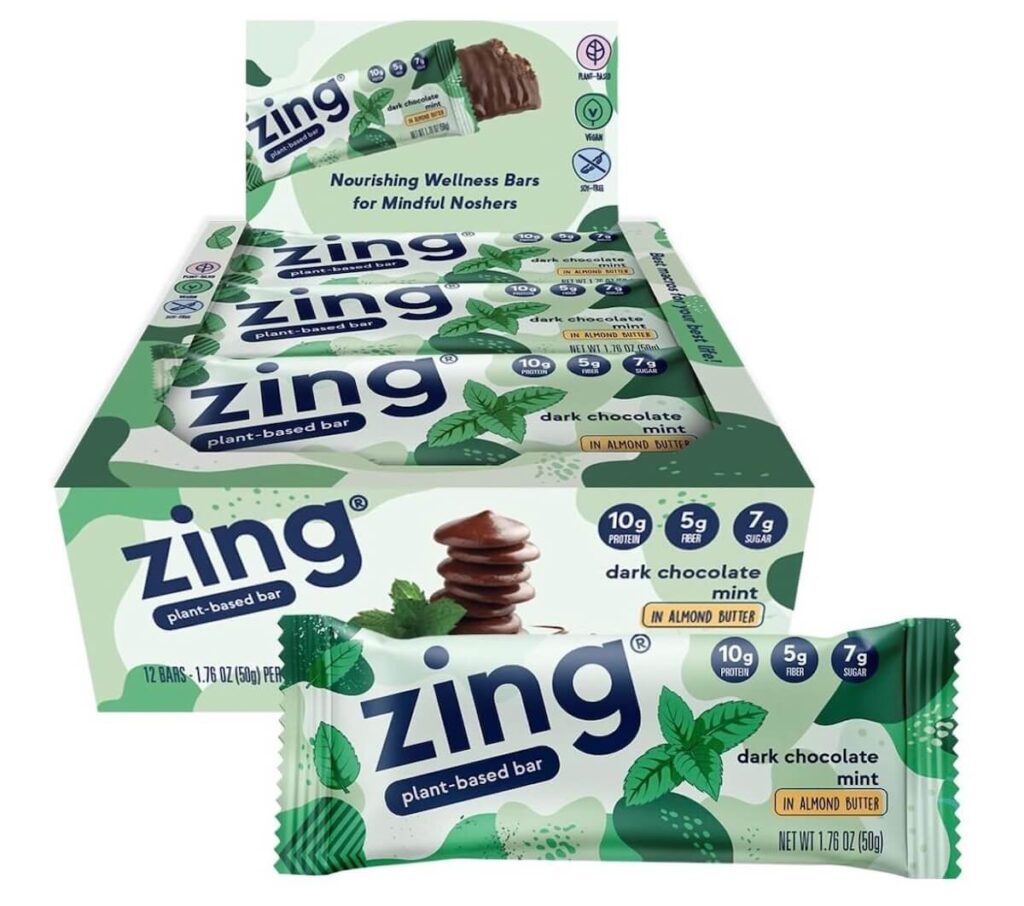
GOOD!
The Good! Cookie bar, advertised to taste like cookie dough covered with chocolate, has 190 mg of sodium, 11 g of fiber, and 15 g of protein. It contains a good greens protein® blend which consists of fava bean protein and brown rice protein.
5 Worst Low Sodium Protein Bars
Protein bars in this category contain more than 150 mg of sodium, more than 5 g of saturated fat (a type of fat that can increase cholesterol levels), either too much or not enough fiber, and formulated with added sugars and processed ingredients.
It is important to note that the following bars, while they do not fit the criteria for a healthy, low-sodium protein bar, can still fit in a healthy and balanced diet.
1. Nature Valley Protein Chewy Bars
Unlike what its name suggests, a Nature Valley bar is formulated with lots of processed ingredients such as corn syrup, vegetable oil, and rice maltodextrin which influence its nutritional composition.
The Coconut Almond bar contains 170 mg of sodium, 5 g of fiber, and 10 g of protein. However, it contains up to 6 g of added sugars (1.5 tsp of added sugar) and 5 g of saturated fat.
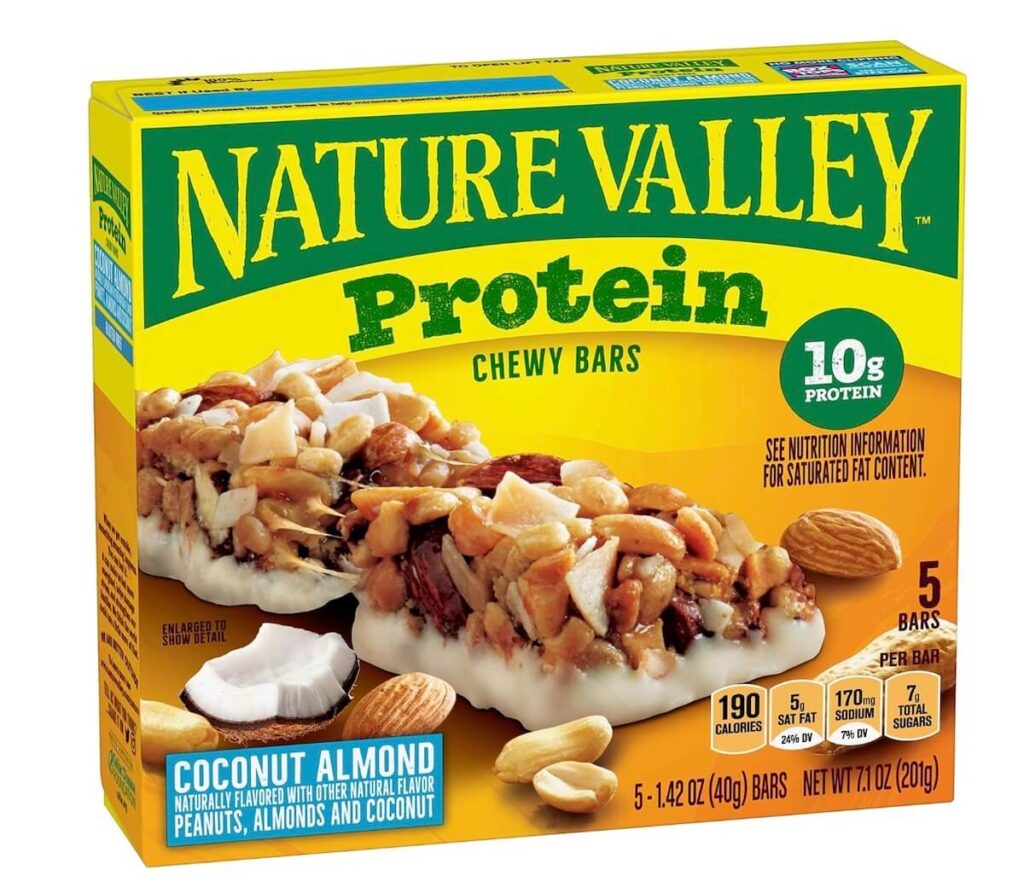
2. Clif Energy Bars

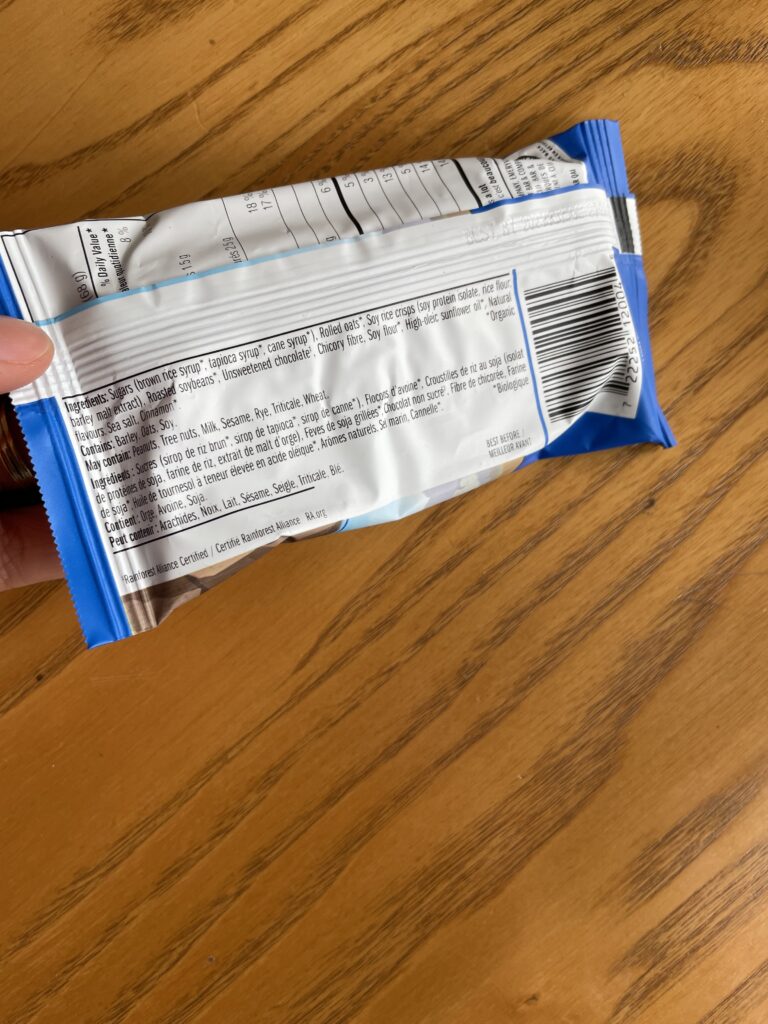
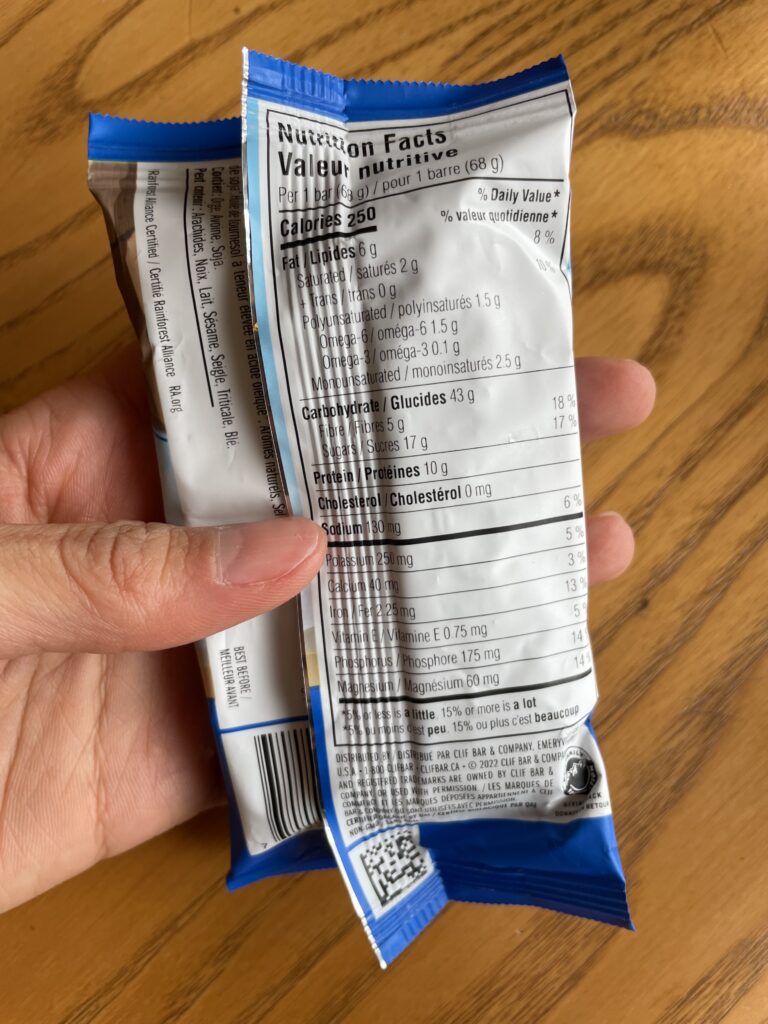
The White Chocolate Macadamia Nut bar contains up to 230 mg of sodium, only 5 g of fiber, 9 g of protein, and a whopping 16 g of added sugar (or 5 tsp of added sugar). And just for reference women should have no more than 6 tsp of added sugar in a day.
It doesn’t fit the healthy criteria for a good protein bar. However, its calorie-dense nature can provide a quick energy boost for those engaged in intense physical activities.
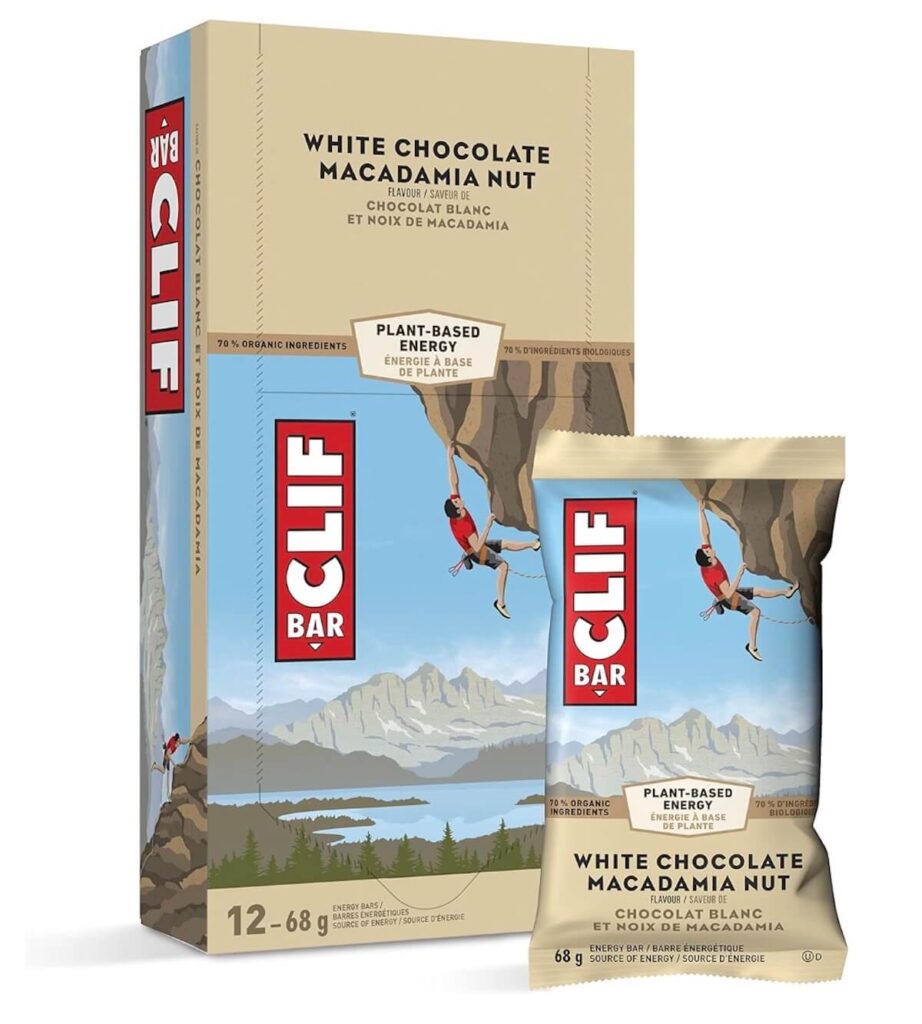
3. ThinkThin
Advertised as a lean protein and fiber bar, the Salted Caramel bar contains 220 mg of sodium, only 5 g of fiber, and 10 g of protein.
Its high sodium content may not fit in your low-sodium diet. However, the bar is fortified with vitamin A, vitamin C, and vitamin B complexes.

4. Simply Protein Bars
The Dark Chocolate Almond Bar contains 180 mg of sodium, 7 g of fiber, and 12 g of protein. Its long list of ingredients contains processed and artificial ingredients that might not be nutritionally beneficial.

5. Quest
The Birthday Cake bar contains 250 mg of sodium, 12 g of fiber, and 20 g of protein. Besides its high sodium content, it also contains 9 g of sugar alcohols. The bacteria in your large intestine break them down for your body and consequently produce gas. Thus, you may experience bloating and diarrhea (8).

Summary of Best and Worst Low Sodium Protein Bars
Best Low Sodium Protein Bars:
| Brand | Sodium (mg) | Protein (g) | Fiber (g) | Comments |
| Rise Bar | 20 | 20 | 4 | Almond Honey Bar, made from almonds, honey, and pea protein isolate. |
| NAKED Bar | 110 | 15 | 6 | Peanut Butter Bar, made with simple ingredients like nut butter and natural sweeteners. |
| RXBar | 140 | 12 | 4 | Blueberry Bar, made with simple ingredients such as cashews and egg whites. |
| Kind Bar | 135 | 12 | 6 | Crunchy Peanut Butter Bar, made from peanuts and soy protein. |
| GoMacro Macrobar | 100 | 12 | 2 | Maple Sea Salt, made from pea, brown rice protein, and flaxseeds. |
Runner Up/Honorable Mentions:
| Brand | Sodium (mg) | Protein (g) | Fiber (g) | Comments |
| Health Warrior Chia Seed Bar | 45 | 3 | 5 | Acai Berry bar, its main ingredient is chia seeds. |
| Zing | 70 | 10 | 4 | Dark Chocolate Mint bar, made with prebiotic tapioca syrup. |
| GOOD! | 190 | 15 | 11 | Cookie bar, contains a blend of fava bean protein and brown rice protein. |
Worst Low Sodium Protein Bars:
| Brand | Sodium (mg) | Protein (g) | Fiber (g) | Comments |
| Nature Valley Protein Chewy Bars | 170 | 10 | 5 | Coconut Almond bar, contains processed ingredients and added sugars. |
| Clif Energy Bars | 230 | 9 | 5 | White Chocolate Macadamia Nut bar, high in added sugars. |
| thinkThin | 220 | 10 | 5 | Salted Caramel bar, high sodium content but fortified with vitamins. |
| SimplyProtein Bars | 180 | 12 | 7 | Dark Chocolate Almond Bar, contains processed and artificial ingredients. |
| Quest | 250 | 20 | 12 | Birthday Cake bar, high in sodium and sugar alcohols which can cause digestive discomfort. |
Key Takeaways When Buying Low Sodium Protein Bars
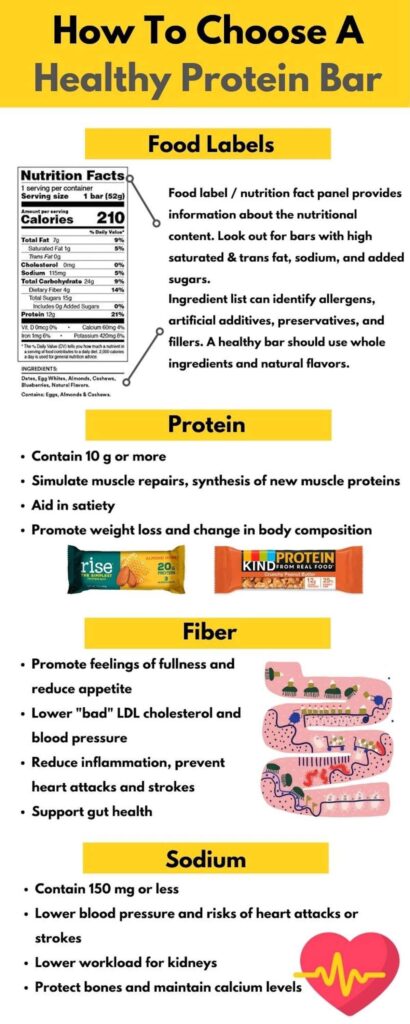
1. Understanding Nutritional Labels:
The key to choosing a heart-healthy, low sodium protein bar lies in understanding food labels and ingredient lists. By opting for bars with 150 mg or less of sodium and prioritizing those with whole food ingredients, consumers can make informed decisions that align with their personal health goals.
2. The Importance Of Fiber And Protein:
These nutrients are crucial in a balanced diet and contribute to heart health and overall wellness. They aid in promoting feelings of fullness, stimulate muscle repair, and can help in weight loss.
3. Low Sodium For Heart Health:
Consuming a low-sodium diet can mitigate risks associated with high blood pressure and other cardiovascular diseases. Processed foods, including some protein bars, can often contain higher amounts of sodium, underscoring the importance of reading product labels carefully.
4. Read Labels:
While protein bars offer convenience, not all are created equal. For those seeking heart-friendly options, scrutiny of labels and an understanding of nutritional content can guide healthier choices that are low in sodium and high in fiber and protein.
Check out these blog posts if you’re looking for other low sodium products:
And we have lots of low sodium recipes like low sodium chili, low sodium pizza sauce and low sodium salmon recipes!
Final Thoughts
While navigating the world of low-sodium protein bars in 2024, remember to look beyond the health halo and carefully read nutrition labels. Not all protein bars are created equal, and understanding their nutritional profile is key to making a choice that aligns with your heart health goals.
As a Registered Dietitian focused on heart health, I am confident that armed with the right knowledge, you can make wise decisions that benefit your health in the long run. From sodium content to other essential nutrients, a mindful approach towards snacking can bring about profound changes in our health.
Remember, it’s not just about finding a snack that’s convenient—it’s about finding one that’s both nutritious and heart-healthy. Let me know if I missed your favorite low sodium protein bar in the comments below!
Happy snacking!


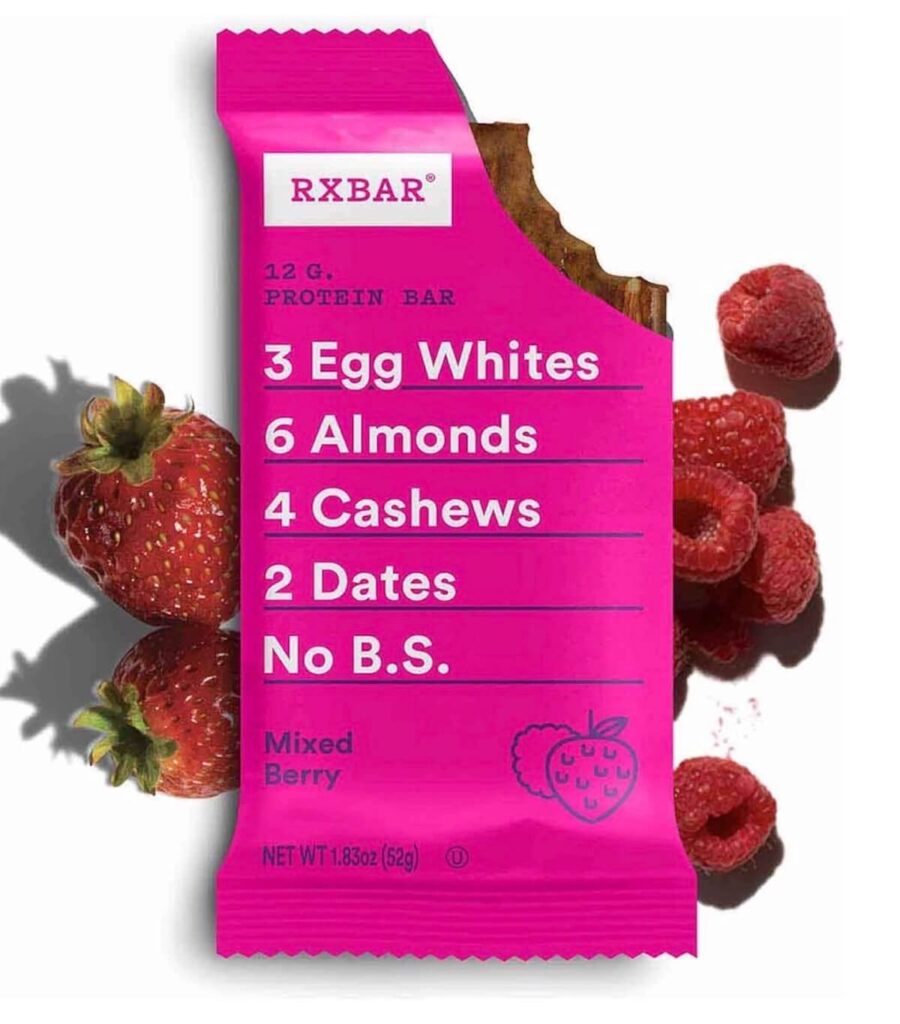
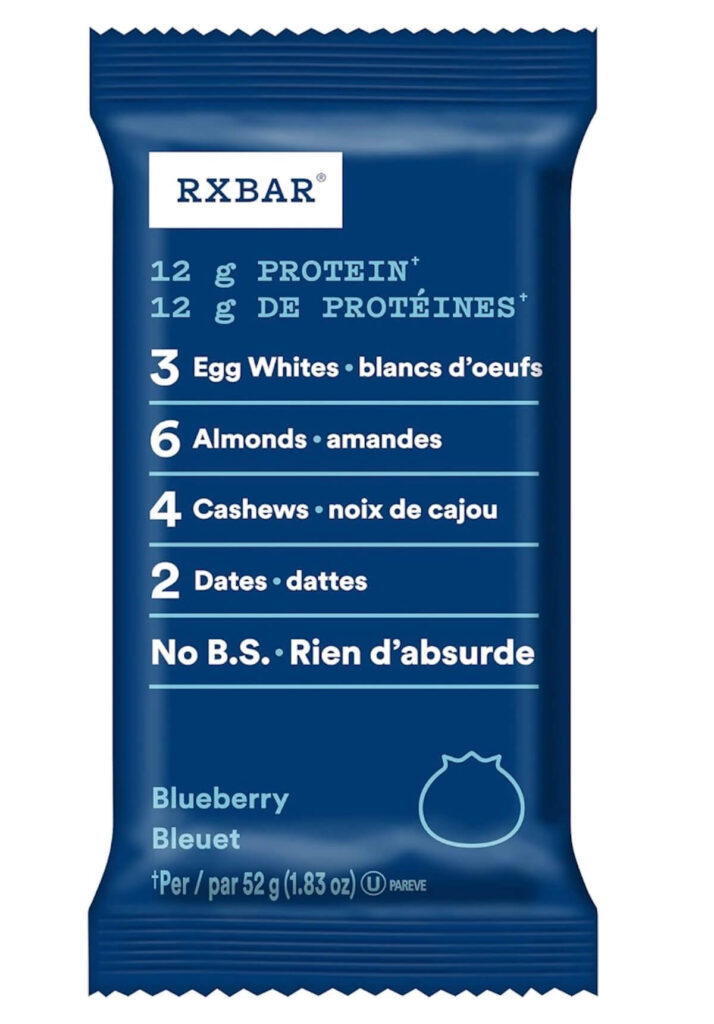
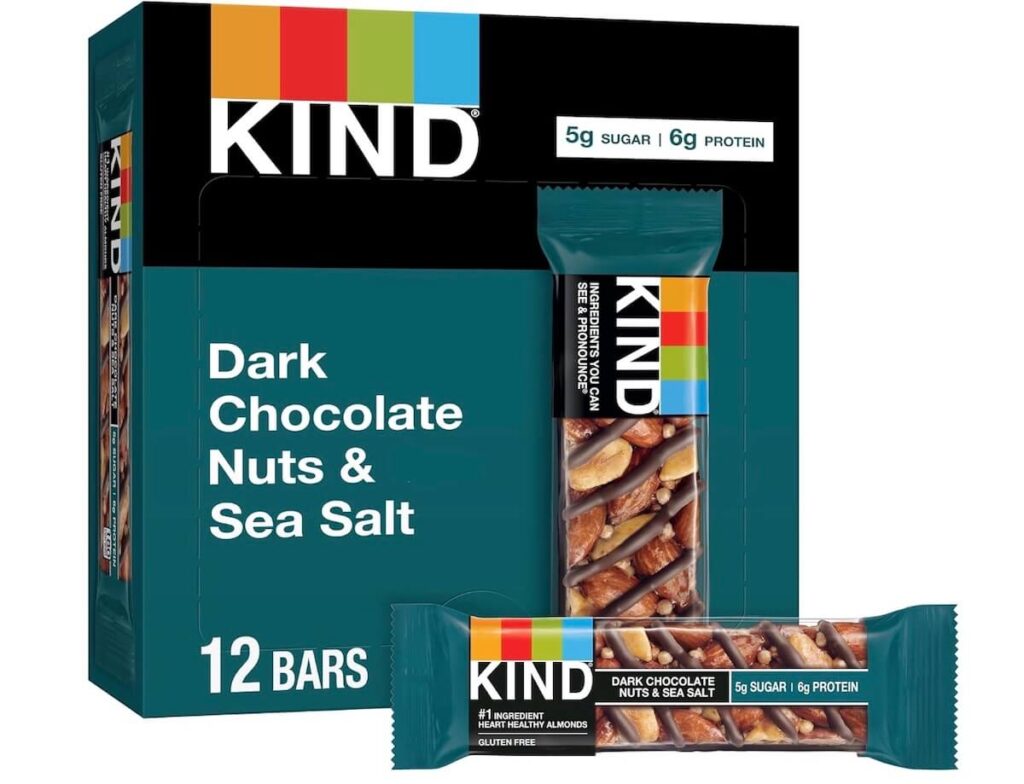
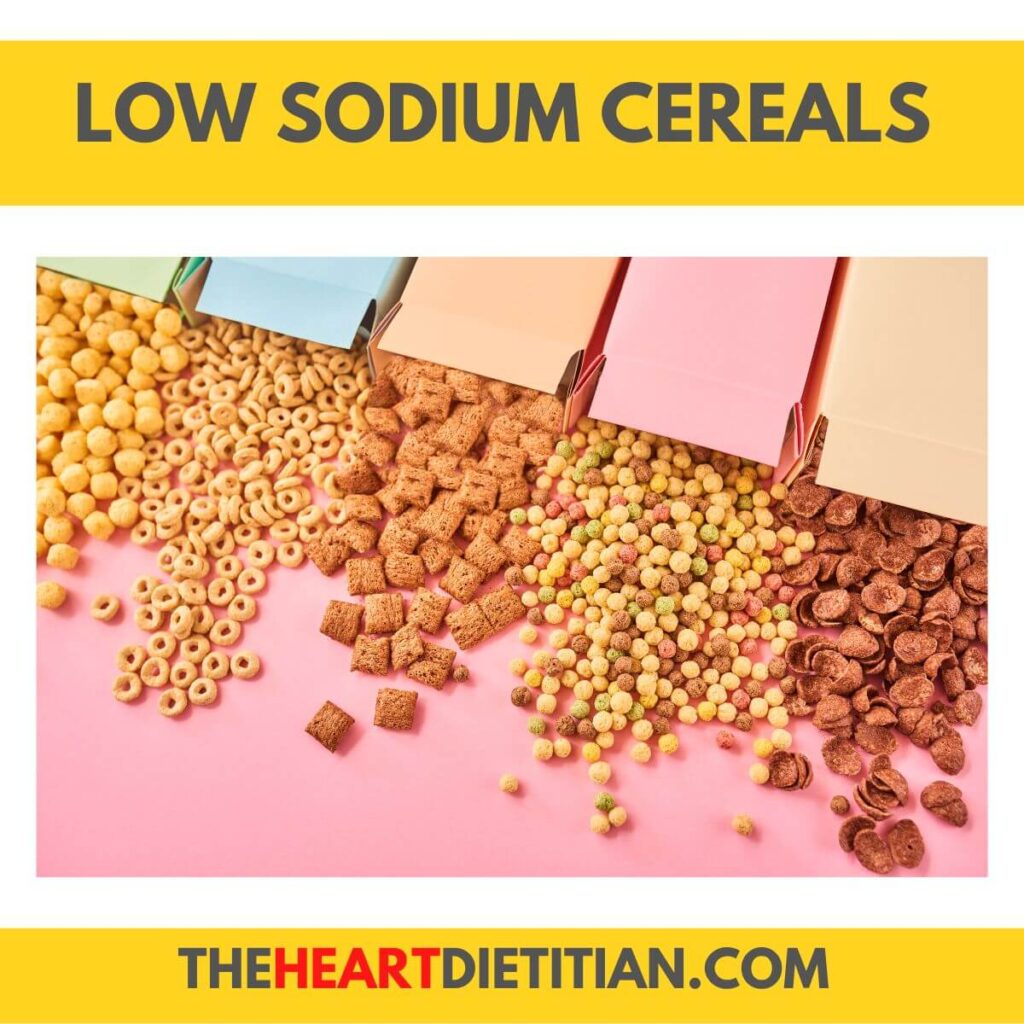
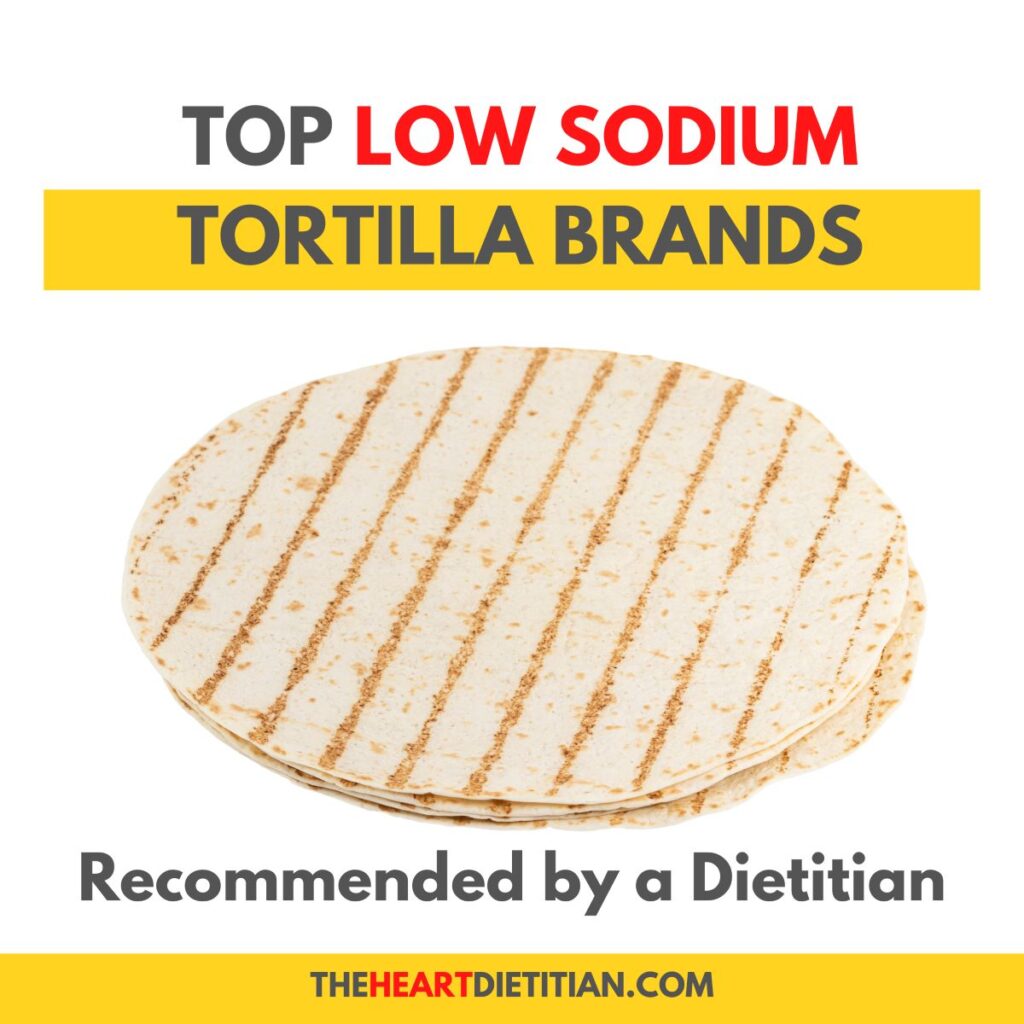
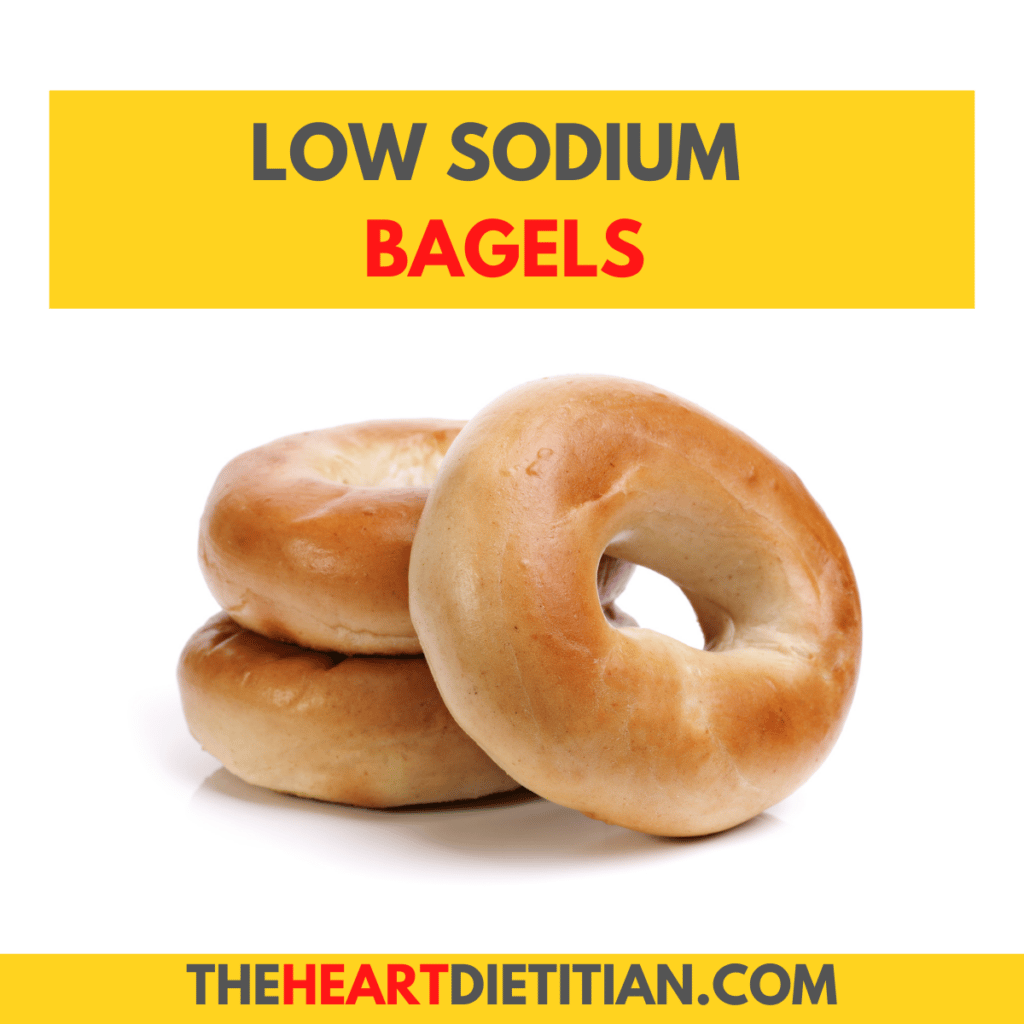
My husband had heart surgery a couple of months ago. I was concerned about his muscle loss & spoke to a dietician about adding more protein to his diet – especially something he could have after his cardiac rehab exercise class. She did mention a few of the ones on your best list. But looking in stores at all the bars was driving me nuts. I found more of the bars from the worst list than the best.
I really appreciate your article because of how you explained what to exactly look for especially in the amount of protein & sodium. I look forward to reading other articles you have written. Now I can shop for protein bars knowing exactly what to look for! Thanks!
Yay! I’m so glad this article was helpful Jancie. Happy shopping 🙂